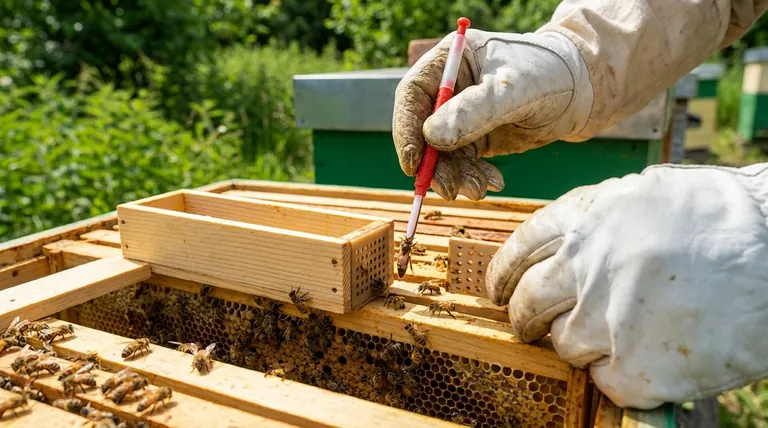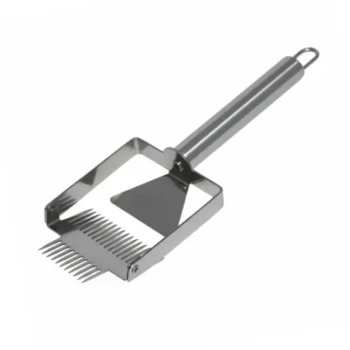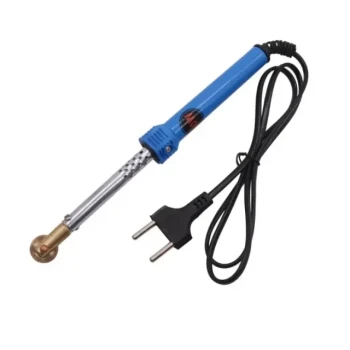In beekeeping management, a queen bee is confined to a comb box using a physical barrier she cannot pass through. Beekeepers find the queen, place her inside the specialized box (often a single frame or a small enclosure), and then seal the entrance with a queen excluder plug. Because the queen's thorax is larger than that of worker bees, she is trapped inside, while the smaller worker bees can still pass through the excluder to feed and care for her.
The core principle is not just about trapping the queen, but about controlling where and when she lays eggs. This technique is a deliberate management practice used almost exclusively for queen rearing, ensuring a high concentration of larvae of a precise, known age for grafting.

The Mechanics of Queen Confinement
Confining the queen is a precise operation that relies on specific equipment and an understanding of bee biology. It is an artificial intervention designed to serve a specific beekeeping goal.
The Comb Box and Excluder Plug
A comb box, sometimes called a cell box or laying cage, is a small frame or enclosure containing fresh, empty honeycomb. It is designed to be placed within a larger hive body.
The key to confinement is the queen excluder plug. This is a small piece, often a removable circle or slide, made of the same material as a standard queen excluder. The slots are large enough for worker bees but too small for the queen to squeeze through.
The process is straightforward: the beekeeper locates the queen, places her into the comb box through the opening, and then inserts the plug to seal her in.
Why Worker Access is Critical
The confinement system would fail if the queen were completely isolated. Worker bees must have access to the queen through the excluder material.
They are responsible for feeding the queen (trophallaxis) and tending to her needs. Without this constant care, the queen would quickly perish. This access also allows them to prepare the cells for her to lay in.
The Purpose: Synchronizing Larvae for Queen Rearing
Confining the queen is not a routine practice for hive health; it is a specialized technique with one primary goal: producing larvae of a uniform, very young age for grafting.
Guaranteeing Larvae Age
For successful queen rearing, beekeepers graft larvae that are ideally less than 24 hours old. Finding larvae this young by searching an entire hive is difficult and time-consuming.
By confining the queen to an empty comb box for a set period, such as 10 to 12 hours, the beekeeper knows that any egg or larva found in that box is within a very narrow age window. This dramatically increases the efficiency and success rate of grafting.
Simplifying Collection
Once the confinement period is over, the beekeeper doesn't need to search multiple frames. They can simply remove the one comb box, which now contains a high density of perfectly aged eggs or just-hatched larvae, ready for transfer into queen cups.
Leveraging the Queen's Instincts
Queen bees naturally use their forelegs to measure cell dimensions before laying. They lay fertilized eggs (which become female workers) in smaller worker cells and unfertilized eggs (which become male drones) in larger drone cells.
The comb box is equipped with worker-sized cells to encourage the queen to lay the fertilized eggs needed to produce new queens.
Understanding the Trade-offs
While effective, this technique is an intensive manipulation that comes with risks and considerations. It interferes with the natural state of the colony.
Stress on the Queen
Being confined to a small space is an unnatural and potentially stressful event for the queen. This is why the confinement period is kept as short as possible, typically overnight or for less than 24 hours.
Risk of Non-Acceptance
After being placed in the box, the queen must be accepted by the attending worker bees. If she is not cared for through the excluder, she will not lay eggs effectively and her health may decline. After the confinement period, she must be released and safely reintegrated into the colony.
Timing is Everything
The success of the entire operation hinges on timing. The beekeeper must check the box after the designated period (e.g., 10-12 hours) to confirm the queen has laid eggs. Releasing her too soon yields too few eggs; leaving her confined too long causes unnecessary stress and ages the larvae beyond the optimal window for grafting.
Making the Right Choice for Your Goal
Using a comb box for queen confinement is a tool for a specific job. Your goal determines whether it is the right technique to use.
- If your primary focus is queen rearing through grafting: Confining the queen in a comb box is the most reliable method for obtaining a high volume of larvae of the exact age required for success.
- If your primary focus is general hive management or expansion: This technique is unnecessary. A healthy queen's natural laying pattern across several frames is the best indicator of colony vitality and growth.
Ultimately, confining the queen is a powerful technique that allows the beekeeper to precisely manage reproduction for a specific, advanced purpose.
Summary Table:
| Aspect | Key Detail |
|---|---|
| Primary Goal | Queen rearing via grafting |
| Confinement Tool | Queen excluder plug |
| Typical Duration | 10-12 hours |
| Optimal Larvae Age | Less than 24 hours old |
| Key Benefit | High concentration of uniformly aged larvae |
Ready to elevate your queen rearing operation?
HONESTBEE supplies the durable, precision-engineered beekeeping supplies and equipment—like reliable queen excluders and comb boxes—that commercial apiaries and distributors trust for successful, large-scale queen production. Our wholesale-focused operations ensure you get the quality tools you need to manage your hives with confidence.
Contact HONESTBEE today to discuss your equipment needs and streamline your beekeeping success!
Visual Guide

Related Products
- Plastic Chinese Queen Grafting Tool for Bee Queen Rearing
- Double Head Beekeeping Grafting Tools for Beekeepers
- Professional Stainless Steel Pry-Bar Hive Tool
- Professional Dual-End Stainless Steel Hive Tool for Beekeeping
- Multi-Function Plier-Style Frame Grip Hive Tool
People Also Ask
- What are the steps involved in using a queen grafting tool? A Guide to Successful Queen Rearing
- What conditions should be avoided during grafting? Protect Your Queen Cells from Common Pitfalls
- How should the selected brood frame be prepared for grafting? A Step-by-Step Guide to Protect Larval Viability
- What environmental conditions are optimal for grafting? Master Queen Rearing with Perfect Hive-Like Conditions
- What are the key steps in the grafting technique? Master Queen Rearing for a Thriving Apiary



















